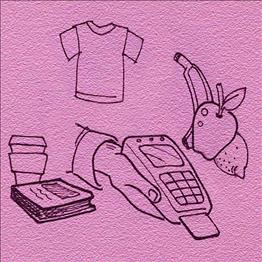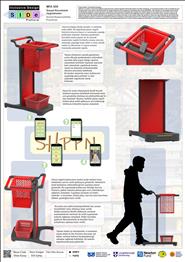Loading
Accessible Shopping

DESIGNED BY:
İlknur Çitak, Bartu Erdoğan, Filiz Ebru Kavraz, Dilan Kınay, Elif Aybaş (SDFB)
INTRODUCTION:
This project focuses on the problems experienced by persons with visual disabilities before and after shopping. The problems experienced within this context were examined, and research was conducted through existing projects. In line with the discussions carried out with the NGO design partner, it was found that the most common problems were experienced during shopping. Therefore, it was decided to conduct a design study on the layout and transportation issues in markets. Although the project aims to roll out solutions for persons with visual disabilities, the overall aim was to produce an inclusive product and a project whole from which all individuals can benefit. Thus, it is aimed to develop a project from which everyone will benefit equally.
The problems faced by persons with visual disabilities during their shopping experience identified in the light of information from our NGO design partner and our research data are listed as follows:
Different types of shopping were evaluated about the identified problems. Therefore, it was concluded that the persons with visual disabilities prefer Online shopping due to problems they have in carrying and finding products while shopping in markets, but it was also revealed that the existing applications have many limitations. Hence, the project focused on a market shopping experience, which would contribute to the participation of persons with visual disabilities in social life.
ACCESSIBLE SHOPPING:
The design process focused on market shopping's most common problems, carrying products and navigation in the market. A solution for a transport product was prioritized in the project. The design decisions within this context, which produce the resulting product, are listed as follows:
The project named "Accessible Shopping" was rolled out in line with these aims, focusing on creating an inclusive shopping experience with arrangements in the market area and the designed market trolley which would give equal opportunities for all during shopping.
İlknur Çitak, Bartu Erdoğan, Filiz Ebru Kavraz, Dilan Kınay, Elif Aybaş (SDFB)
INTRODUCTION:
This project focuses on the problems experienced by persons with visual disabilities before and after shopping. The problems experienced within this context were examined, and research was conducted through existing projects. In line with the discussions carried out with the NGO design partner, it was found that the most common problems were experienced during shopping. Therefore, it was decided to conduct a design study on the layout and transportation issues in markets. Although the project aims to roll out solutions for persons with visual disabilities, the overall aim was to produce an inclusive product and a project whole from which all individuals can benefit. Thus, it is aimed to develop a project from which everyone will benefit equally.
The problems faced by persons with visual disabilities during their shopping experience identified in the light of information from our NGO design partner and our research data are listed as follows:
- The applications that are currently used for shopping do not have image recognition features,
- The fact that Online shopping is more visually oriented,
- The lack of voice reporting in shopping environments,
- Difficulties in the availability of fitting rooms in active shopping,
- The narrow product scale in internet applications for shopping,
- Difficulties in determining product categories during shopping,
- The lack of indoors navigation systems in shopping environments,
- Staying dependent on the phone on the go (battery level and headphone related problems and navigation fee),
- The distraction of attention in places where there is a lot of sound stimuli, such as neighbourhood markets,
- The fact that carrying purchased products becomes difficult with the use of a white cane,
- The market trolleys are not easy to steer,
- The difficulty of finding products and staff members when the layout of the market is not usual.
Different types of shopping were evaluated about the identified problems. Therefore, it was concluded that the persons with visual disabilities prefer Online shopping due to problems they have in carrying and finding products while shopping in markets, but it was also revealed that the existing applications have many limitations. Hence, the project focused on a market shopping experience, which would contribute to the participation of persons with visual disabilities in social life.
ACCESSIBLE SHOPPING:
The design process focused on market shopping's most common problems, carrying products and navigation in the market. A solution for a transport product was prioritized in the project. The design decisions within this context, which produce the resulting product, are listed as follows:
- With the approval of our NGO design partner, it was thought that the expansion of the transport product in vertical rather than horizontal would be more appropriate for steering.
- The design was aimed to facilitate its steering by adding a movement system that runs with simple methods. This movement system aims to reduce the force exerted by the user and prevent possible accidents.
- An area was created where the design’s handle could be extended, and the mobile phone can be fixed. This feature would enable persons with visual disabilities to easily carry around their mobile phones which they would be using for the mobile application.
- It was decided that the design should have a mobile application which would enable persons with visual disabilities to find products easily in the market. For this purpose, a proposal was developed for an application by which markets can upload their own maps.
- It was decided to add tactile tiles onto the surface so that navigation among the aisles would be more comfortable. With our NGO partner’s approval, it was also recommended that product category information be added in the Braille alphabet on the shelves.
The project named "Accessible Shopping" was rolled out in line with these aims, focusing on creating an inclusive shopping experience with arrangements in the market area and the designed market trolley which would give equal opportunities for all during shopping.
Please login to post comments
